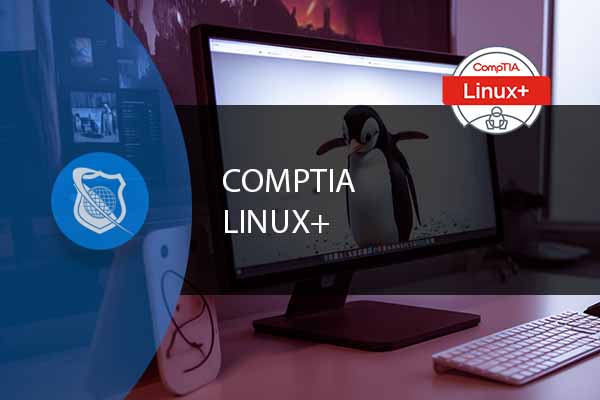SQL Server Embraces Linux: A Game-Changer for Database Management
Revolutionizing with OS Independence
Yes, there is SQL Server and Linux Compatibility. Microsoft’s strategic move to make SQL Server compatible with Linux marks a significant shift in database management landscapes. By abstracting core functionalities from direct OS interactions, SQL Server now natively runs on various Linux distributions such as RedHat, SUSE, and Ubuntu. This approach not only broadens the deployment possibilities but also paves the way for enhanced Docker and Azure VM integrations.
The Power of Virtualization
The innovation lies in the creation of a virtual machine-like layer, where the SQL Server Data Engine interacts with a universal interface. This setup allows the integration of different drivers for seamless interaction with any operating system. It’s a testament to Microsoft’s commitment to versatility and adaptability in the ever-evolving tech world.

Data Analyst Career Path
Elevate your career with our Data Analyst Training Series. Master SQL, Excel, Power BI, and big data analytics to become a proficient Data Analyst. Ideal for aspiring analysts and professionals seeking to deepen their data skills in a practical, real-world context.
Big Data and PolyBase: Expanding SQL Server’s Horizons
Comprehensive Insights into Big Data Clusters and PolyBase Integration
Transforming SQL Server with Big Data Clusters
The introduction of big data clusters in SQL Server represents a monumental leap in its evolution. These clusters are designed to handle massive volumes of data, typical of big data applications, bringing a new dimension to SQL Server’s capabilities. Big data clusters facilitate a distributed architecture, allowing SQL Server to store and process large datasets efficiently. This distributed approach is key to handling big data workloads, as it enables parallel processing, faster query execution, and high availability.
Expanding Capabilities with Base Support
Alongside big data clusters, base support adds another layer of functionality. This combination allows SQL Server to not only handle large amounts of data but also to interact seamlessly with different data formats and sources. This integration means SQL Server can now efficiently process structured and unstructured data, a critical requirement in big data applications.
PolyBase: A Conduit for Diverse Data Integration
The Mechanism of PolyBase
PolyBase stands out as a revolutionary feature in SQL Server’s toolkit, primarily due to its ability to integrate external data sources into the SQL Server environment. It does this by extending T-SQL capabilities to external data sources. PolyBase creates external tables that point to data stored in remote sources, allowing SQL Server to query this data directly. This direct querying capability eliminates the need for separate ETL processes, significantly simplifying data management.
Versatility of Data Source Integration
PolyBase’s strength lies in its versatility. It supports a wide range of data sources, from traditional RDBMS like Oracle to big data platforms like Hadoop and modern cloud storage solutions like Azure Blob Storage. This extensive support makes PolyBase an invaluable tool for organizations dealing with diverse data ecosystems.
Microsoft SQL Server Training Series – 16 Courses
Unlock your potential with our SQL Server training series! Dive into Microsoft’s cutting-edge database tech. Master administration, design, analytics, and more. Start your journey today!
Use Cases and Scenarios: The Real-World Impact of PolyBase
Data Virtualization and Management
Data virtualization is one of the most significant use cases for PolyBase. By creating a virtual layer that accesses external data sources, SQL Server users can perform queries and analyses as if all the data were located on a single server. This capability is particularly useful in environments where data is spread across multiple repositories, as it provides a unified view without physically moving the data.
Facilitating Data Lakes
Data lakes are repositories that store vast amounts of raw data in its native format. PolyBase enables SQL Server to integrate with data lakes, particularly those based on Hadoop ecosystems. This integration allows businesses to leverage the vast storage capabilities of data lakes while using the powerful processing and querying capabilities of SQL Server.
Enhancing AI and Machine Learning
In the realm of AI and machine learning, the ability to process and analyze large datasets is crucial. PolyBase facilitates this by enabling direct access to diverse data sources. This access allows machine learning models to train on a wider variety of data, leading to more accurate and robust models. Furthermore, SQL Server can process and analyze the data where it resides, reducing the latency and overhead associated with data movement.
Optimizing for Performance and Scalability
PolyBase optimizes query performance by pushing computations to the data source. This means that aggregate functions and filters are executed at the source, reducing the amount of data transferred over the network. This approach is particularly beneficial for large datasets, where transferring the entire dataset for local processing would be impractical.
The integration of big data clusters and PolyBase into SQL Server has significantly enhanced its capabilities, making it a more robust, versatile, and efficient solution for managing and processing large-scale and diverse datasets. These advancements have opened up new possibilities for businesses to leverage their data assets more effectively, driving insights and innovation.

Data Analyst Career Path
Elevate your career with our Data Analyst Training Series. Master SQL, Excel, Power BI, and big data analytics to become a proficient Data Analyst. Ideal for aspiring analysts and professionals seeking to deepen their data skills in a practical, real-world context.
Active Directory Support and SQL Server’s Security Management
Enhanced Security with Active Directory: A Closer Look
Strengthening SQL Server Security
The integration of SQL Server with Active Directory (AD) marks a significant advancement in security management for database systems. Active Directory, known for its robust security and administrative features, provides a comprehensive framework for managing user access and permissions in a structured and secure manner.
Organizational Units and Permission Management
One of the core features of this integration is the support for Organizational Units (OUs) in AD. OUs allow for a hierarchical structure within the AD, enabling administrators to group users and resources into distinct categories. This structure is particularly beneficial for managing permissions in SQL Server, as it allows for granular control over who has access to what data. The ability to assign and manage permissions at the OU level streamlines the process of securing data and ensures that only authorized personnel have access to sensitive information.
Big Data Cluster Management in Active Directory
Managing Multiple Clusters
A key benefit of integrating SQL Server with Active Directory is the ability to manage multiple big data clusters within a single AD domain. This capability is crucial for organizations that operate multiple clusters, as it simplifies administration and reduces the complexity of managing separate security models for each cluster.
Organizational Units for Cluster Separation
The recommended practice is to use separate OUs for each big data cluster. This separation enhances security and organization, making it easier to manage permissions and policies for each cluster independently. It allows administrators to apply specific security policies and access controls to each cluster, ensuring that the data and resources within each cluster are protected according to their specific requirements.
CompTIA Linux+
Unlock the power of Linux with our comprehensive online course! Learn to configure, manage, and troubleshoot Linux environments using security best practices and automation. Master critical skills for the CompTIA Linux+ certification exam. Your pathway to success starts here!
Bridging Linux and Active Directory: Harmonizing Platforms
Integrating Linux-based Systems with AD
The integration of Linux-based Docker implementations with Active Directory is a significant achievement in the realm of cross-platform compatibility. This bridging is crucial for environments where SQL Server big data clusters are deployed on Linux containers, as it enables these clusters to participate in the AD domain.
Role Mapping for Effective Administration
The integration involves mapping specific big data cluster roles to AD groups. This mapping is a critical aspect of maintaining security and operational efficiency. By assigning roles to AD groups, administrators can control access and permissions for various tasks within the cluster. This role-based access control (RBAC) model is in line with the principle of least privilege, ensuring that users and services have only the access necessary to perform their functions, thereby reducing the risk of unauthorized access or actions.
Seamless Administration and Security Compliance
The result of this integration is a seamless administration experience, where the management of Linux-based big data clusters aligns with the organization’s overall security policies and practices. It ensures that the clusters are compliant with the security standards set by the organization and that the administration of these clusters is as efficient and secure as the rest of the IT infrastructure.
In summary, SQL Server’s integration with Active Directory enhances the security and manageability of big data clusters, particularly in mixed OS environments. It provides a unified and secure approach to managing access, roles, and permissions, aligning with best practices in security and compliance. This integration not only simplifies the administrative burden but also fortifies the security posture of organizations leveraging SQL Server for their data management needs.
SQL Server’s Big Picture: A Unified Data Management Ecosystem
Unifying Data from Diverse Sources: The Heart of SQL Server’s Evolution
A Paradigm Shift in Data Management
The evolution of SQL Server is emblematic of a fundamental shift in data management strategies. No longer confined to the traditional role of a database management system, SQL Server has transcended into a platform that epitomizes integration and scalability. This transformation is centered around the concept of unifying data from a myriad of sources, establishing a cohesive ecosystem for data management.
The Role of PolyBase in Data Integration
A key player in this integration is PolyBase, a groundbreaking feature that allows SQL Server to seamlessly access and amalgamate data from diverse external sources. PolyBase enables SQL Server to create external tables that link to data stored in other databases and different file formats, including NoSQL databases and big data stores like Hadoop and Azure Blob Storage.
Bridging Structured and Unstructured Data
One of the challenges in modern data management is bridging the gap between structured and unstructured data. SQL Server, through PolyBase, effectively addresses this by treating external data sources as if they were native to the SQL Server environment. This approach allows users to execute SQL queries across relational and non-relational data, thus breaking down the barriers between different data formats and sources.
Real-World Applications and Scenarios
In practice, this unified data approach has profound implications for businesses and organizations:
- Data Virtualization: Organizations can access and analyze data across various storage locations without the need for data migration. This reduces the time and resources spent on ETL (Extract, Transform, Load) processes and allows for more agile data handling and decision-making.
- Big Data Analytics: By integrating with big data sources, SQL Server enables organizations to perform complex analytics on large datasets. This is particularly beneficial in scenarios where insights need to be derived from a combination of traditional enterprise data and big data sources.
- Cross-Platform Data Management: With the ability to interface with different data platforms, SQL Server becomes a central point for managing and querying data, regardless of where it resides. This cross-platform compatibility is crucial in a world where data is increasingly scattered across multiple cloud environments and on-premises systems.

Lock In Our Lowest Price Ever For Only $14.99 Monthly Access
Your career in information technology last for years. Technology changes rapidly. An ITU Online IT Training subscription offers you flexible and affordable IT training. With our IT training at your fingertips, your career opportunities are never ending as you grow your skills.
Plus, start today and get 10 free days with no obligation.
Enhancing Business Intelligence and Reporting
The unification of data sources greatly enhances business intelligence and reporting capabilities. Organizations can now draw from a more comprehensive data set, leading to more informed decisions and strategies. It also allows for more sophisticated reporting and analytics, as data from various sources can be combined and analyzed in ways that were previously not possible.
The Future: A Data-Driven Landscape
Looking ahead, the role of SQL Server in unifying data sources is set to become even more critical as the volume and variety of data continue to grow exponentially. The ability to efficiently manage and analyze this data will be a key differentiator for businesses seeking to leverage insights for competitive advantage.
In conclusion, SQL Server’s capability to unify data from diverse sources marks a significant advancement in the world of data management. It’s a shift from merely storing data to creating an integrated, scalable, and efficient ecosystem that caters to the dynamic needs of modern data-driven organizations.
Embracing Modern Infrastructure
With features like high availability, scalability, and compatibility with modern tools like Azure Data Studio, Spark, and Hadoop, SQL Server is well-equipped to handle the demands of big data.
Looking Ahead: Architecture and Scalability
The next focus will be on delving deeper into the architecture of SQL Server’s big data clusters, exploring how they leverage the power of modern infrastructure for optimized data management and scalability.
Key Term Knowledge Base: Key Terms Related to SQL Server and Linux Compatibility
Understanding the key terms related to SQL Server and Linux compatibility is crucial for professionals in the field of database management and IT infrastructure. As technologies evolve, the integration of different systems like SQL Server and Linux becomes increasingly significant. This knowledge is vital for effectively managing, deploying, and optimizing database solutions in diverse environments. Here’s a list of key terms that are essential in this context:
| Term | Definition |
|---|---|
| SQL Server | A relational database management system developed by Microsoft, designed to manage and store information. |
| Linux | An open-source, Unix-like operating system kernel that forms the basis for various operating systems. |
| PolyBase | A technology in SQL Server that allows querying data using T-SQL, stored in external sources like Hadoop or Azure Blob Storage. |
| Big Data Clusters | SQL Server feature that provides scalable compute and storage by combining Kubernetes, SQL Server, and HDFS (Hadoop Distributed File System) into a unified data platform. |
| Docker | A platform used for developing, shipping, and running applications in isolated environments known as containers. |
| Azure VM | Azure Virtual Machines, a part of Microsoft’s cloud computing services, used for deploying virtualized servers. |
| RedHat | A popular Linux distribution known for its enterprise-level stability and support. |
| SUSE | A Linux distribution that focuses on business environments, known for its scalability and security. |
| Ubuntu | A Debian-based Linux operating system, known for its ease of use and popularity in both desktop and server environments. |
| T-SQL | Transact-SQL, an extension of SQL used in Microsoft SQL Server for transaction control, error handling, and row processing. |
| ETL | Extract, Transform, Load – a process in database usage and data warehousing for copying data from one or more sources into a destination system. |
| Active Directory | Microsoft’s directory service for Windows domain networks, which handles permissions and access to networked resources. |
| Hadoop | An open-source framework for storage and processing of large datasets across clusters of computers. |
| Azure Blob Storage | Microsoft’s object storage solution for the cloud, used for storing large amounts of unstructured data. |
| Data Lake | A storage repository that holds a vast amount of raw data in its native format until it is needed. |
| Kubernetes | An open-source system for automating deployment, scaling, and management of containerized applications. |
| HDFS | Hadoop Distributed File System, a distributed file system designed to run on commodity hardware. |
| AI | Artificial Intelligence, the simulation of human intelligence processes by machines, especially computer systems. |
| Machine Learning | A type of AI that allows software applications to become more accurate in predicting outcomes without being explicitly programmed. |
| RBAC | Role-Based Access Control, a method of regulating access to computer or network resources based on the roles of individual users within an enterprise. |
| Data Virtualization | The process of abstracting and integrating data from multiple, heterogeneous sources, presenting it as a single source. |
| Data Analytics | The science of analyzing raw data to make conclusions about that information. |
| Business Intelligence | Technologies, applications, and practices for the collection, integration, analysis, and presentation of business information. |
| Scalability | The capability of a system to handle a growing amount of work or its potential to accommodate growth. |
| Cloud Computing | The delivery of different services through the Internet, including data storage, servers, databases, networking, and software. |
This list provides a foundational understanding of the terms associated with SQL Server and Linux compatibility, aiding professionals in navigating this integrated technological landscape.
Frequently Asked Questions Related to SQL Server, Linux Integration, and Big Data Clusters
What are the benefits of SQL Server’s compatibility with Linux?
SQL Server’s compatibility with Linux extends its deployment options, allowing it to run on various Linux distributions such as RedHat, SUSE, and Ubuntu. This enhances the flexibility for organizations in choosing their operating environments. Additionally, it enables SQL Server to be integrated into Docker containers and Azure Virtual Machines, providing more scalability and efficiency in deploying and managing database services.
How does PolyBase enhance SQL Server’s capabilities?
PolyBase is a feature in SQL Server that allows the creation of external tables linking to data in different data sources, such as Hadoop, Azure Blob Storage, and Oracle. This enables SQL Server to perform queries across both relational and non-relational data sources as if they were all part of the local database. It simplifies data management and analysis, especially in environments with diverse data ecosystems.
Can SQL Server handle multiple big data clusters in a single Active Directory domain?
Yes, SQL Server can manage multiple big data clusters within a single Active Directory domain. This is facilitated by the integration of SQL Server with Active Directory, which allows for efficient management and organization of multiple clusters. It is recommended to use separate Organizational Units for each cluster to simplify management and enhance security.
What is the significance of integrating Linux-based Docker implementations with Active Directory in SQL Server?
Integrating Linux-based Docker implementations with Active Directory allows SQL Server big data clusters running in Linux containers to be part of the Active Directory domain. This integration ensures consistent security management, role-based access control, and compliance with organizational security policies across mixed OS environments.
How does SQL Server’s integration with Active Directory improve security management?
The integration of SQL Server with Active Directory provides a robust framework for managing security and permissions. It leverages Active Directory’s hierarchical structure and group policy management to organize users and permissions efficiently. This integration facilitates granular control over database access, aligning SQL Server’s security management with the organization’s overall IT security infrastructure.


























